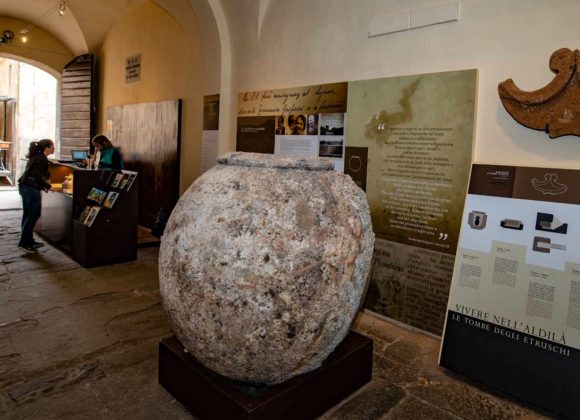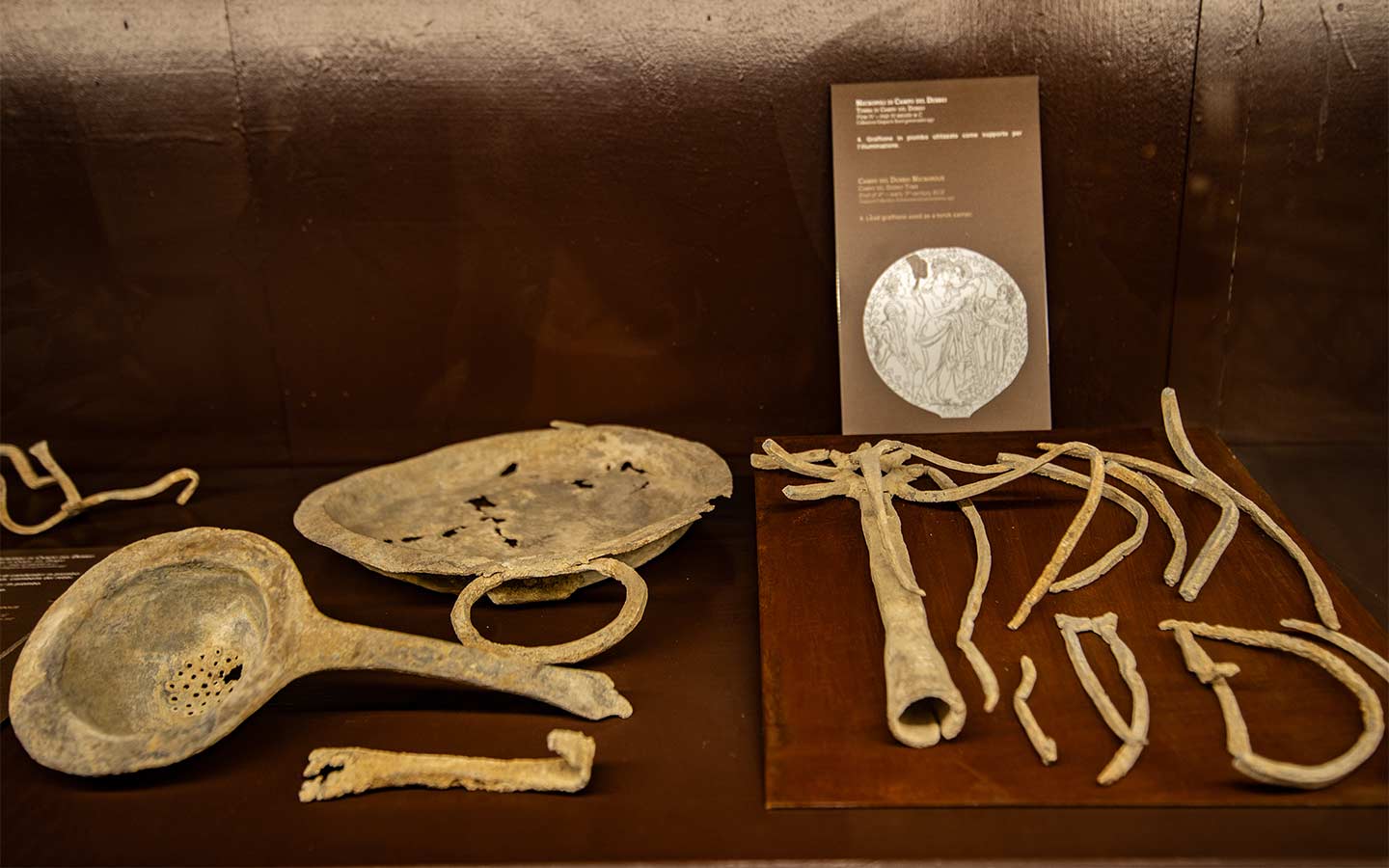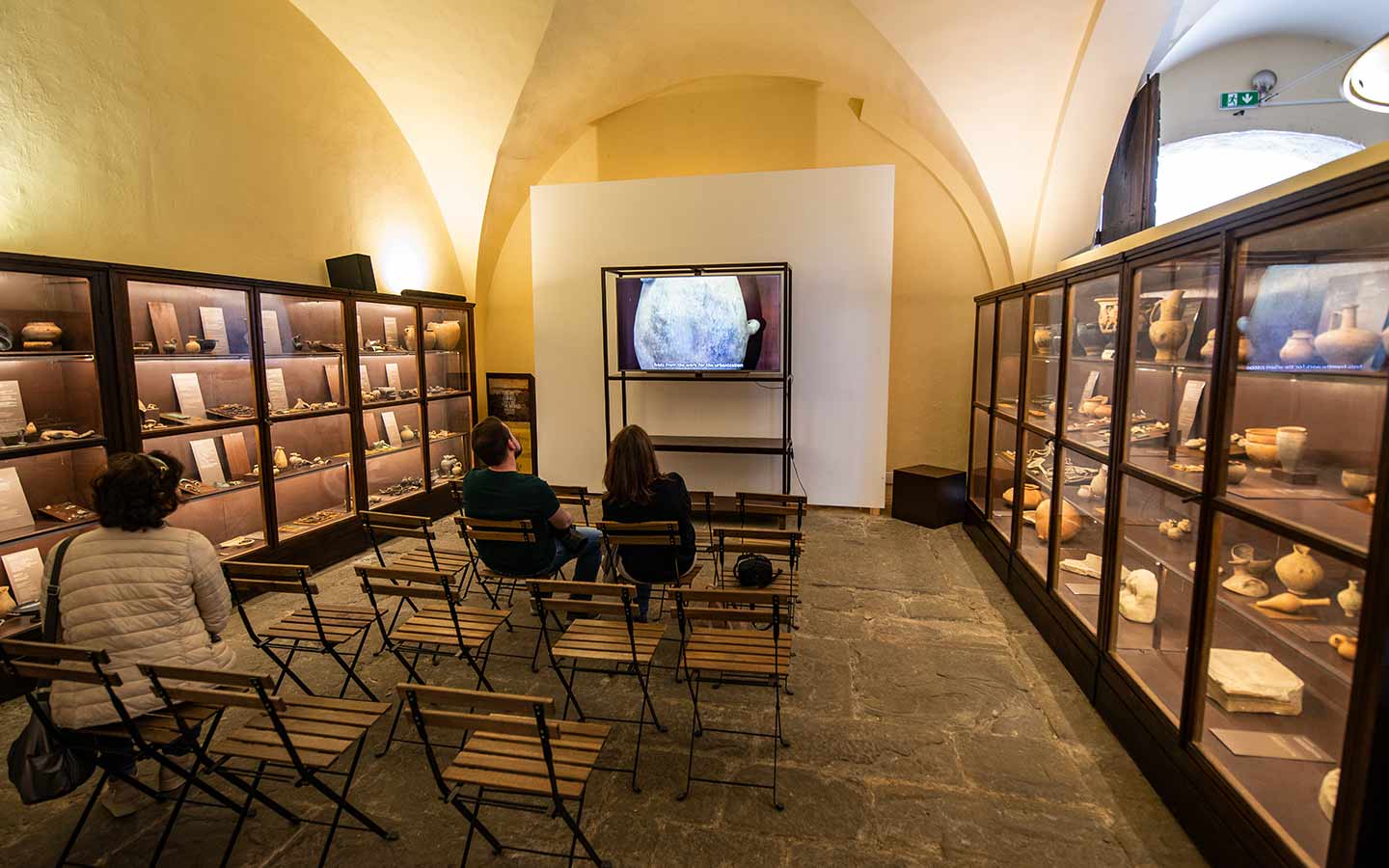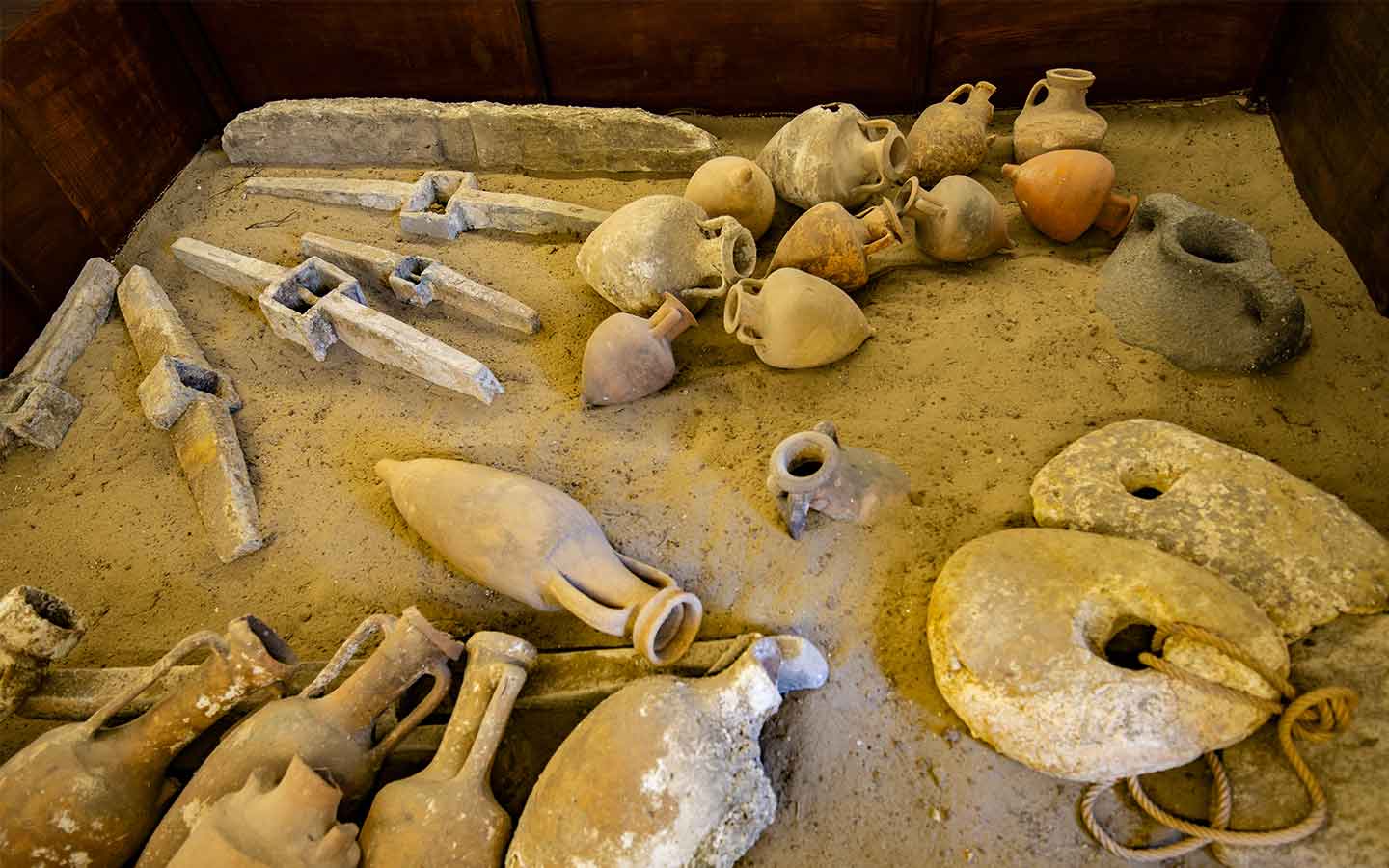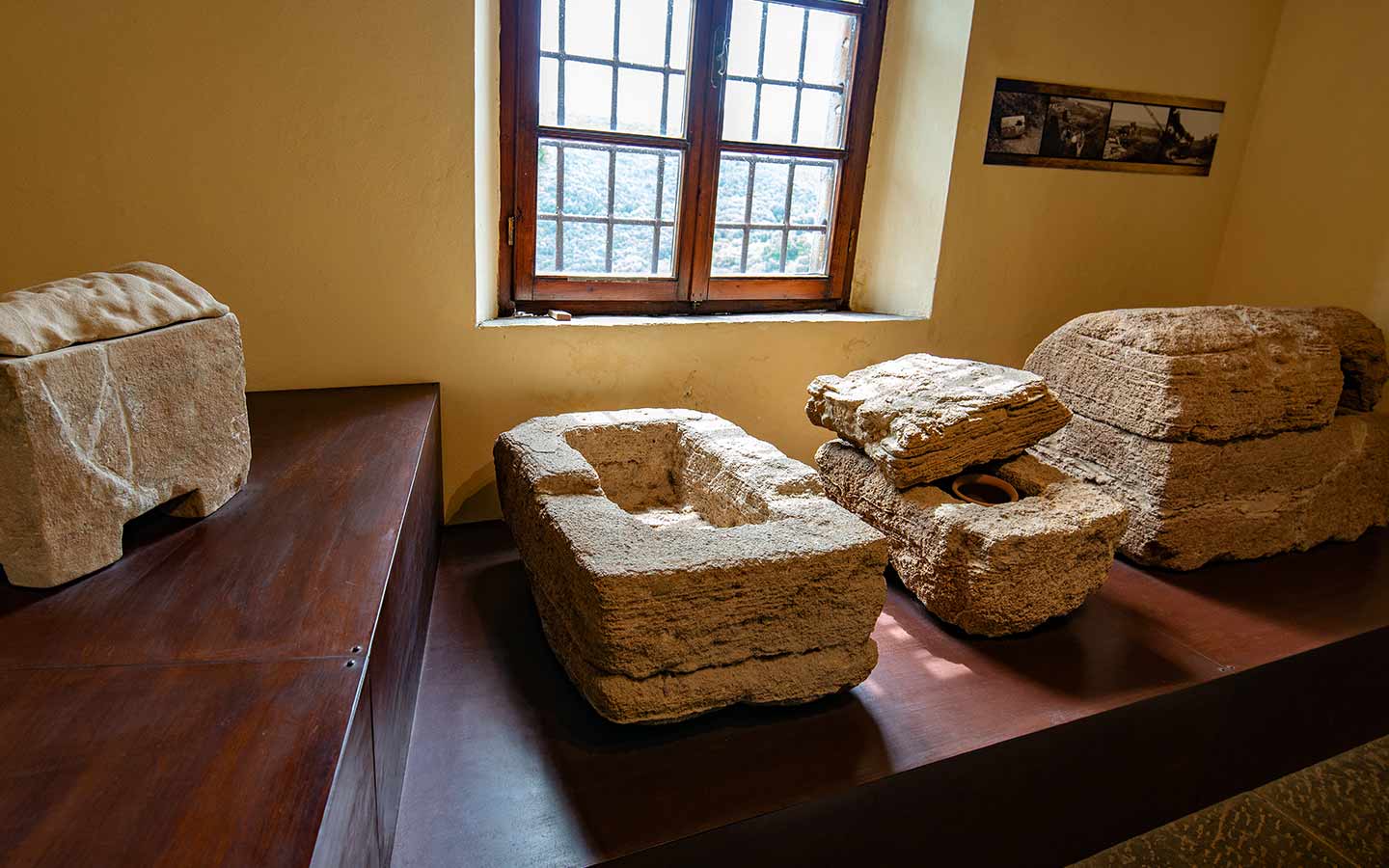Museum
INTRODUCTION
Etruscan Museum of Populonia: Gaspari Collection
The Etruscan Museum of Populonia: Gaspari Collection is a hidden little gem. Beyond its windows lies an exceptionally beautiful panorama of the territory which produced the various items in its collection. In the brief course of a visit, it presents a concentration of important archaeological finds, demonstrating a wide range of aspects of daily life among the Etruscans, from religious cults and funerary practices to maritime commerce in the Mediterranean. The museum’s connection with the Gulf of Baratti and its inhabitants can be glimpsed behind its antique style showcases. On the other hand, the museum encapsulates the importance of the modern scientific activities carried out in the territory through various seminars, conferences, and temporary exhibitions.
THE STORY
The oldest museum in the Val di Cornia
The Etruscan Museum of Populonia represents the oldest museum institution in the Val di Cornia. Inaugurated in 1943 according to the wishes of Giulia and Tommaso Gasparri, it hosts the archaeological finds belonging to the family’s private collection. In the first half of the 20th century, the Etruscan necropolises of Baratti and Populonia were first discovered. The first nucleus of the museum’s collection consisted of finds which were dedicated by the Superintendence of Etruscan Antiquity to the Gasparri family as a finder’s reward (equal to a quarter of the value of the finds), since the recent archaeological discoveries came from properties in their possession. In the 1950s and 60s, the collection was enlarged with finds coming from government excavations of the necropolises, as well as objects found out of their original context in the fields and sea of Baratti. In 1985, in occasion of the celebrations surrounding the “Year of the Etruscans,” the museum was renovated. In 1988, it was moved into the building of the former oil mill of the Castle of Populonia, which it occupies today.
THE ROOMS
The rooms of Etruscan Museum of Populonia: Gaspari Collection
The Etruscan burial goods of a few tombs, visible today in the Archaeological Park of Baratti.
The visit continues with a collection of archaeological finds which emerged during urban planning works at Villini.
Populonia, the only true Etruscan city on the sea, emerges as a result of its connection with the Mediterranean in this modern and evocative installation.
A glimpse into funerary archaeology, the most direct route for investigating the very life and mentality of the Etruscans: cippi of various typologies, sarcophaguses and a tomb “alla cappuccina.”
Dieci cose da non perdere
Scoprire il passato significa conoscere aspetti e oggetti della vita quotidiana delle persone che hanno vissuto in tempi che non sono poi così lontani.

